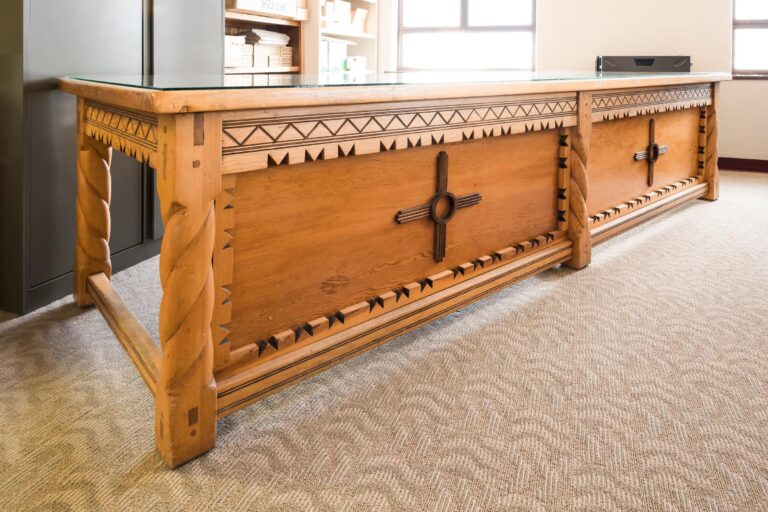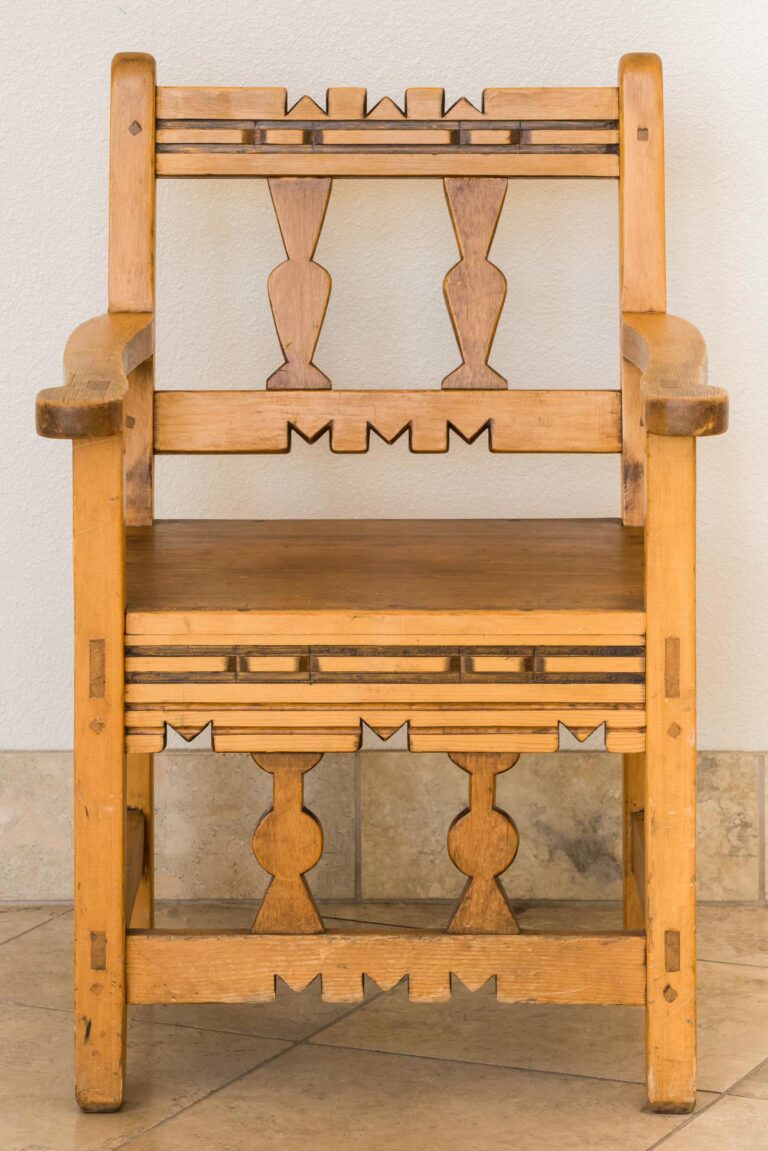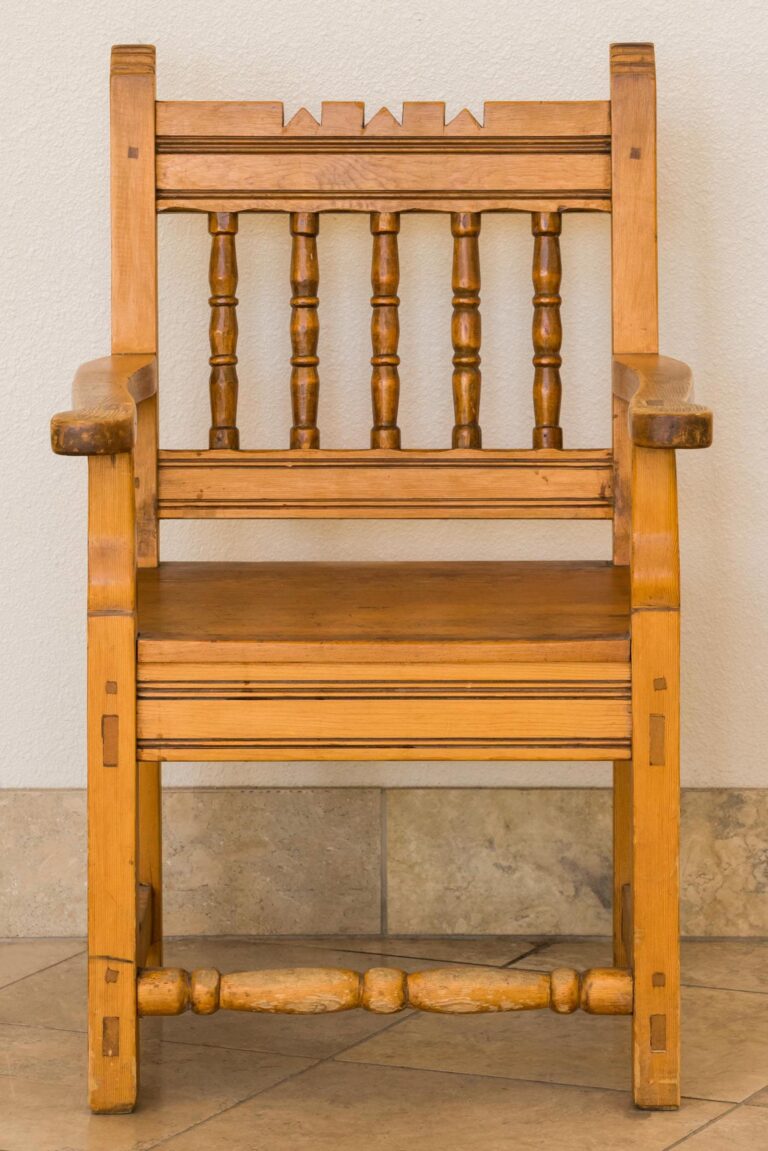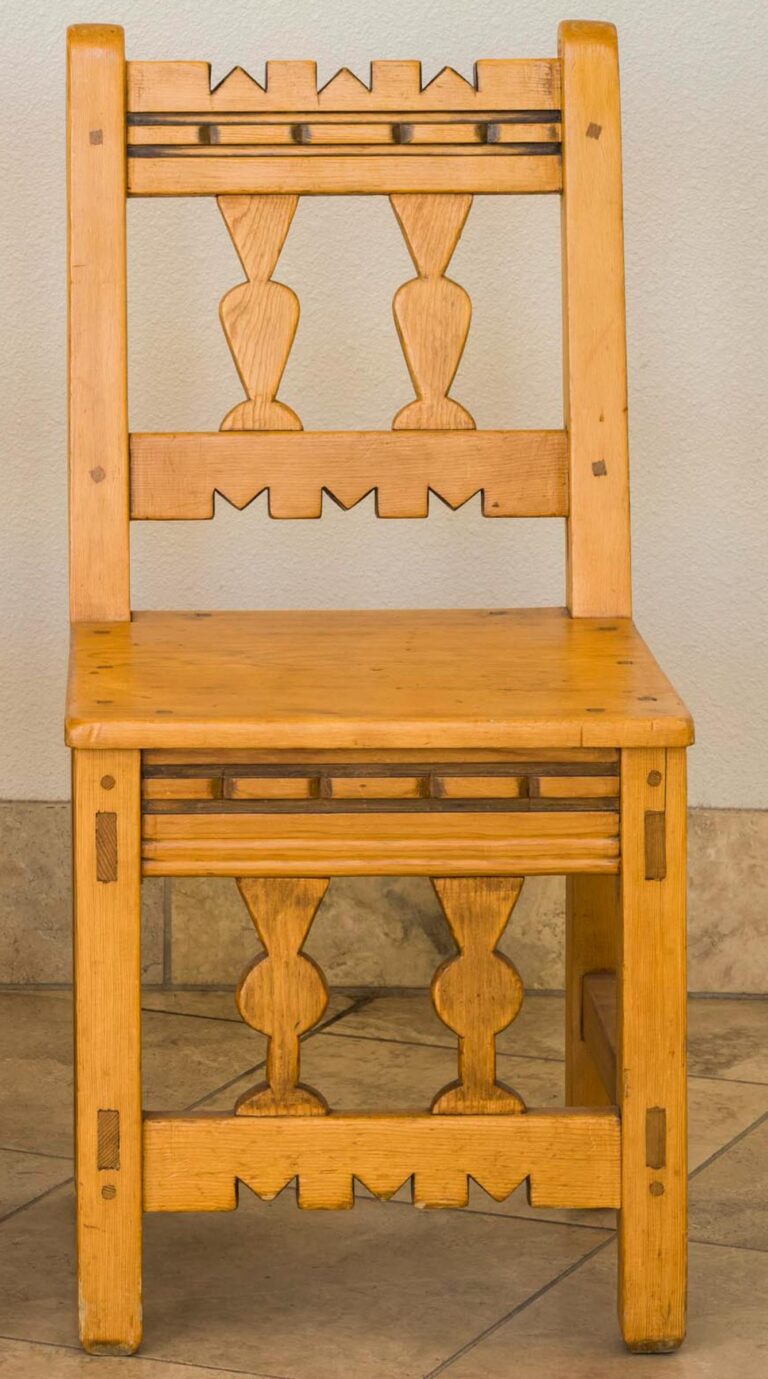New Deal art programs distinguished between “fine artists” and “craftspeople,” and employed workers differently depending on the category. Fine artists were essentially salaried and given a quota of artworks (typically, paintings or prints) to produce each week or month for inclusion in traveling exhibitions or allocation to public buildings. Fine artists were also granted commissions for projects like murals requested by local governments and communities. In contrast, artists designated as craftspeople were hired to assist with projects and to work in workshops, producing furniture and decorative arts according to design manuals. Ethnic and class biases played a large part in New Deal artist employment practices. While most “fine artists” were formally educated men of European or European-American descent, most “craftspeople” were artists of color, often self-taught.
This trastero (cabinet) was likely produced by Elidio Gonzales at the Taos Vocational School, a New Deal workshop. It is a fine work of art, thoughtfully conceived and very skillfully executed—notice the clarity and uniformity of its hand-carved pattern—yet its maker was not credited at the the time of the New Deal. It was only relatively recently that Gonzales’s identity as a New Deal artist was recovered by scholar Tey Marianna Nunn1 and credit for this piece able to be at least tentatively assigned to him.









